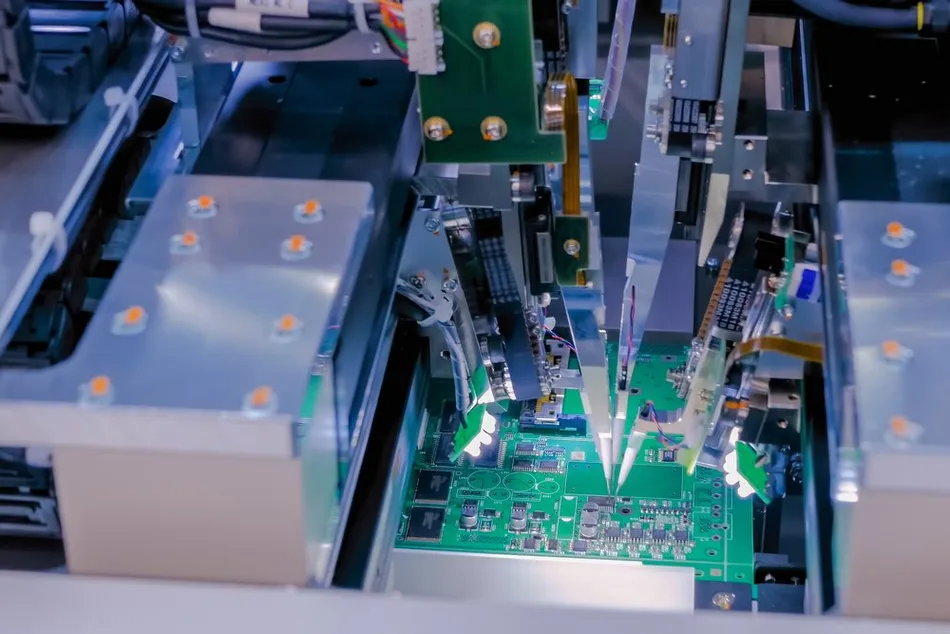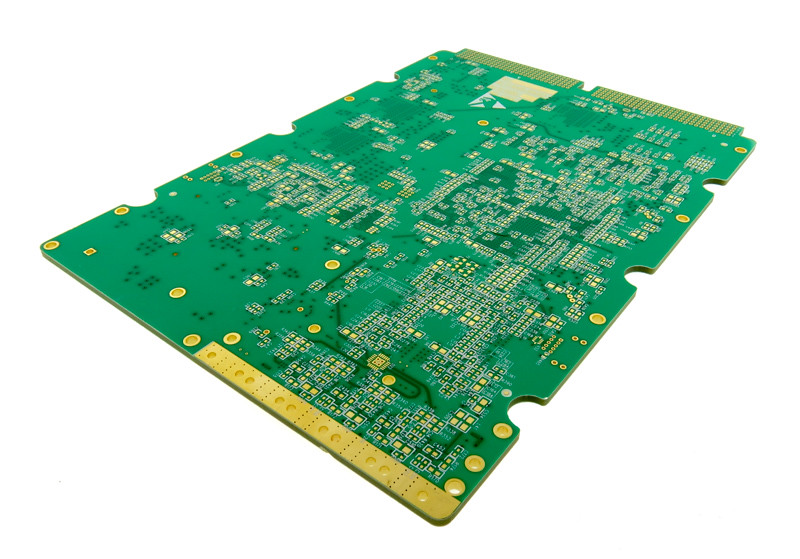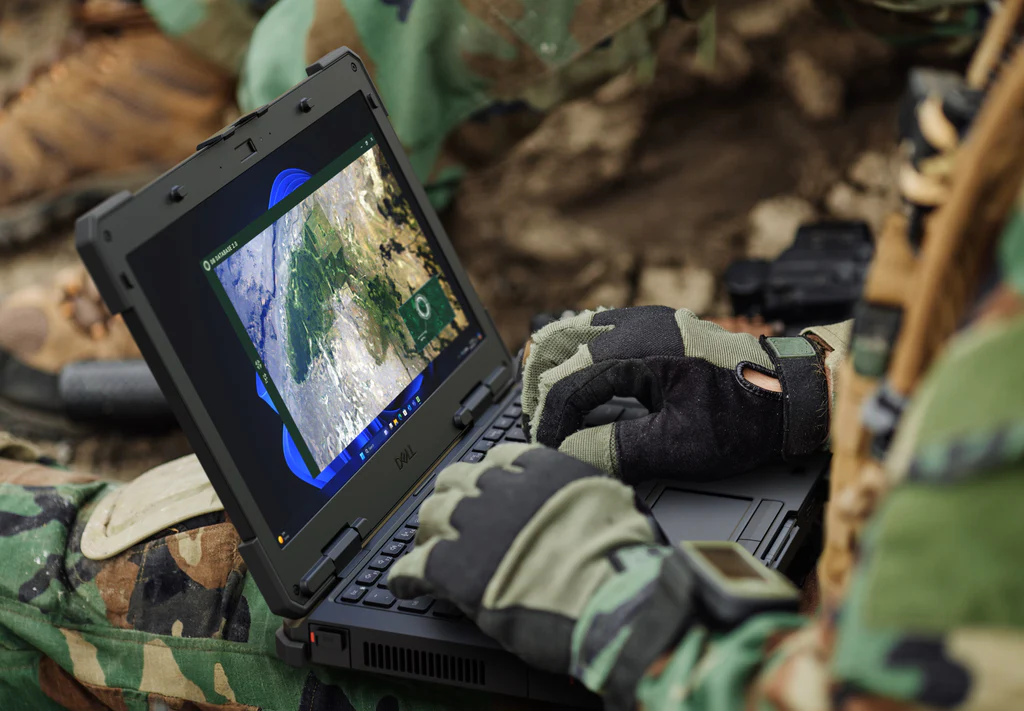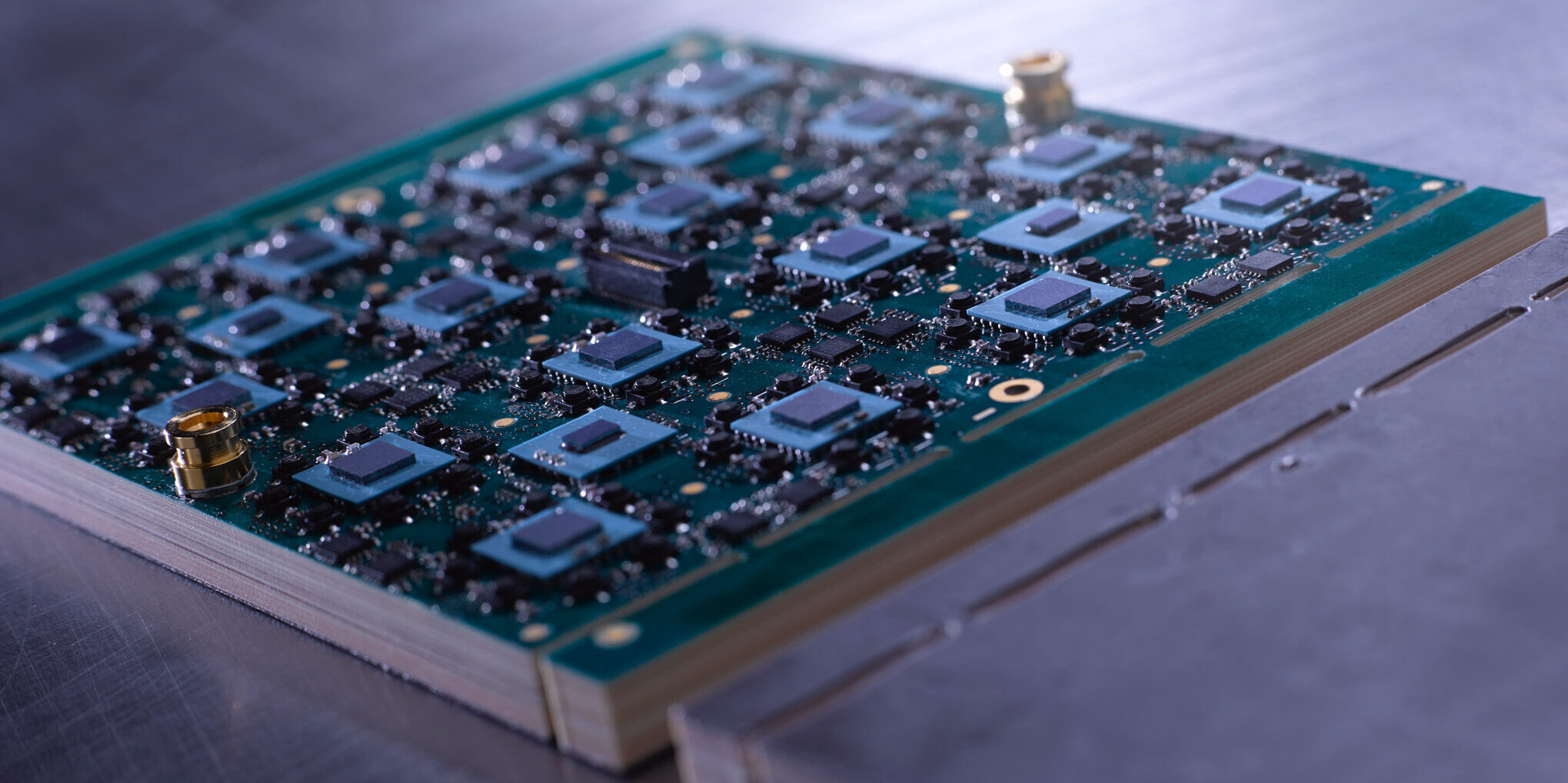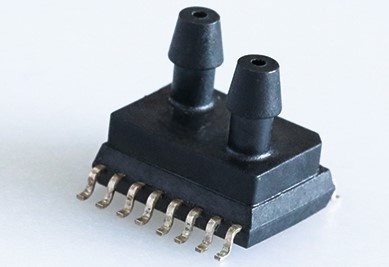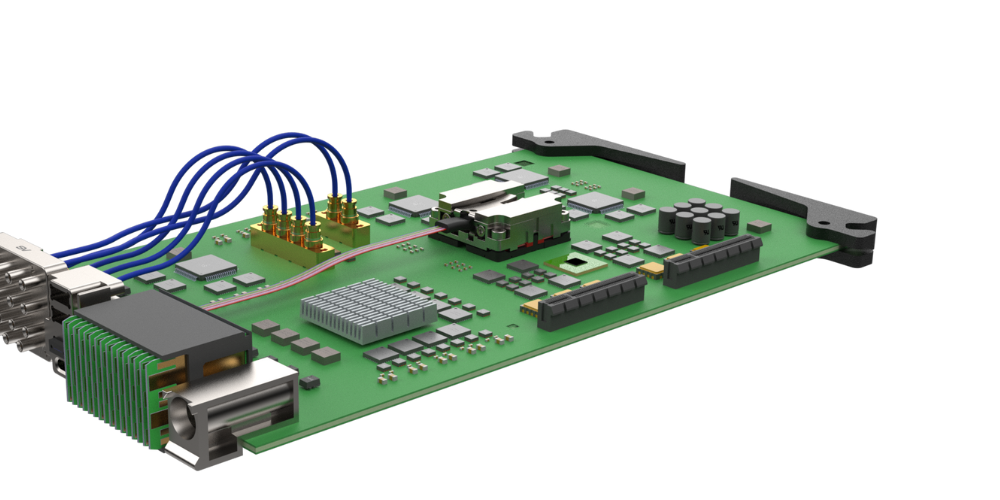Client Industry: European EMC Testing Equipment Manufacturer Applications: ISO 17025-Certified Probe Calibration / High-Frequency Field Measurement 1. Manufacturing Challenges Critical Requirements: Previous Supplier Limitations:▶ Manual thickness compensation caused ±8% dielectric variation▶ PTFE delamination during lamination (yield loss 15%)▶ Probe-to-probe measurement deviation >±3.5dB 2. Precision Manufacturing Innovations (A) Proprietary Process Flow Process Stage Technical Breakthrough Control Precision Material Prepreg […]
Client Industry: European Industrial Equipment ManufacturerApplications: Particle Accelerator RF Systems / Industrial Microwave Heating 1. Industry Manufacturing ChallengesCritical Requirements: Previous Supplier Issues:▶ CTE mismatch in traditional aluminum substrates caused copper layer delamination▶ Manual MOSFET soldering led to ±15% thermal resistance variation▶ Water-cooling solutions increased system complexity by 30% 2. Advanced Manufacturing Solutions (A) Core Process […]
Industry: Defense Electronics
End Applications:
Armored vehicle main control units
Field communication relay equipment
Manufacturing Challenges:
Heterogeneous material processing (AlSiC metal substrate + FR4 multilayer hybrid lamination)
Extreme environment reliability (MIL-STD-810H vibration compliance)
Military-grade quality control (100% inspection + batch traceability)
Previous Supplier Pain Points:
✔ AlSiC substrate yield only 65% (delamination due to CTE mismatch)
✔ PCIe gold finger contact failure rate 3,000 PPM (post-vibration)
✔ EMP shielding layer vacuum lamination yield below 80%
1. Project Background
Industry: Satellite Communications/Military Radar
Application Scenario:
256-channel phased array antenna system (28GHz Ka-band)
Customer requirements: ±60° beam steering, ±0.5dB amplitude consistency, 8-week delivery
1. Customer Profile Client: AnonymousIndustry: ADAS (Advanced Driver Assistance Systems), Autonomous VehiclesApplication: 77GHz Long-Range Radar (LRR) for Highway Pilot & Collision Avoidance Customer’s Requirements: Key Challenges: 2. KKPCB’s Radar PCBA Solution (A) Material & Stackup Layer Material Function Key Specs RF Layers Rogers RO3003 Antenna Array & Front-End Dk=3.0, Df=0.0013 @ 77GHz Core Arlon 25FR […]
1️⃣ Background Overview Global medical equipment is accelerating its intelligentization, and the requirements for the accuracy and reliability of pressure sensors in ventilators continue to increase. A Middle Eastern medical equipment manufacturer plans to upgrade its ventilator airway control system, which requires a differential pressure sensor module that can operate stably in a high temperature and […]
Client: Anonymous
Industry: Telecom Infrastructure, 5G Macro/Micro Base Stations
Application: Power Amplifier (PA) Modules + RF Front-End PCBs
High-power base station equipment requiring PCBs are able to handle:
High current (30A+) for PAs
Low-loss RF (3.5GHz-28GHz for 5G)
Thermal stability (85°C ambient, 125°C local hotspots)
Key Challenges Faced:
Delamination risk from mixed thick-copper (6oz) and RF layers.
EMI coupling between power and RF sections.
Thermal warping under high thermal cycling.
Client: Anonymous
Industry: Fiber Optic Test & Measurement, High-Speed Data Transmission
Application: Next-gen 100G/400G+ optical transceivers, OTDR equipment, and 50GHz RF test modules.
FIS designs precision fiber optic tools, requiring ultra-low-loss PCBs to maintain signal integrity at millimeter-wave frequencies (up to 50GHz). Their challenges include:
Insertion loss degrading high-speed signals (>40Gbps).
Impedance mismatches causing reflection noise.
Thermal expansion leading to microvia cracking in compact designs.
The customer is a globally leading manufacturer of communication equipment, specializing in the development and production of large-scale routers, switches, servers, and high-speed networking devices. As modern network communications demand increasingly high signal integrity, reliability, and thermal stability, the customer required an 18-layer PCB with low-loss material (S1000-2M) and advanced immersion gold plating to ensure stable signal transmission and long-term reliability
The Rogers RO4835 + IT180 hybrid PCB offers unparalleled performance for high-frequency and microwave applications, combining the best attributes of both materials. From automotive radar systems to advanced wireless communication and military-grade electronics, this hybrid PCB is optimized to meet the performance, durability, and reliability requirements of modern technologies.







